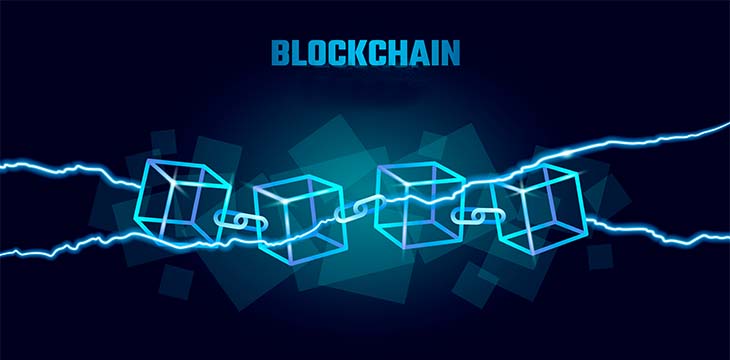|
Getting your Trinity Audio player ready...
|
As the speculative frenzy on digital currencies begins to fizzle out, attention is finally turning to the utility and potential use cases of blockchains.
In this article, I’ll cover the different types of blockchains, what they’re suitable for, and how you can find out more about the legitimate legal use cases of this revolutionary technology.
The different types of blockchains
In 2009, Satoshi Nakamoto released Bitcoin. It was the world’s peer-to-peer electronic cash system on an infinitely scalable public proof-of-work blockchain. Bitcoin’s native token could move on this ledger between different wallets with time-stamped ledger entries recording every transaction.
Soon, many different types of blockchains proliferated as companies and loosely associated groups of developers mistakenly tried to “improve” on Nakamoto’s original invention.
Broadly speaking, blockchains fall into two categories: public and private, although many different types of consensus mechanisms are associated with these two types.
The difference between public and private blockchains is what it sounds like: anyone can write to and build on a public blockchain, whereas private blockchains require permission to access and use. Think of public blockchains as the internet and private blockchains as the various intranets run by private companies, government agencies, etc. It’s not a perfect analogy, but it will do.
These two types of blockchains can have many different consensus mechanisms. The best-known of these is proof-of-work and proof-of-stake. I won’t get into the nitty-gritty of these in this article, but those interested can read more about the flaws of proof-of-stake blockchains here. Of course, there are other types of consensus mechanisms, such as proof-of-history, proof-of-authority, and others, but covering those is outside the scope of this particular article.
What are the benefits of a scalable public blockchain?
To date, no public blockchains have come close to Satoshi Nakamoto’s original design when it comes to security, scalability, and the ability to build on and use it without permission.
What are the benefits of an infinitely scalable public blockchain?
First, it’s public, so anyone can do anything they want, as long as it’s legal.
Second, it’s infinitely scalable, so there’s no throughput transaction limit, meaning blockchains like BSV can process any amount of data required by the applications that utilize the protocol.
What are some of the potential use cases of public, scalable blockchains? Let’s cover three of them in more detail.
Micropayments – In the Bitcoin white paper, Satoshi Nakamoto told us the core problem Bitcoin was designed to solve: enabling small, casual payments on the internet.
Due to the overheads associated with trusted third parties like Visa or PayPal, transactions under a certain amount were economically unfeasible. Nakamoto solved that by creating the world’s first peer-to-peer electronic cash system, requiring no trusted intermediaries and hence not having the associated overheads. For the first time, virtually free transactions of pennies or less were possible online.
Many who encounter micro and nano payments for the first time wonder why they’re so important and what we could possibly buy for a penny or less. BSV advocate Issac Morehouse created an insightful series exploring the potential of tiny payments in detail, but I’ll outline a few here.
With tiny payments, a new breed of social media apps that don’t serve ads or collect data could be born. Instead, users could upload media they own, such as photos or videos, and receive micropayments for each like or share. Apps like La Mint are already showing how this could work.
Micropayments could also bring about new gaming models. Rather than subscriptions, players could both pay and earn within games, and new ideas such as Instant Leaderboard Payouts could change the way games work forever. This is already happening in the Haste Arcade.
Micro and nano payments could also change the way we consume content online. Rather than visiting a website and agreeing to have our data harvested while we’re subjected to a barrage of annoying ads, we could pay a penny to access an article and leave a tip for the author if we liked it.
Of course, these ideas are just scratching the surface and have profound implications for how the Web2 internet works today. As a result, coalitions of incumbent Big Tech firms created an organization called COPA to sue Bitcoin’s inventor in a futile attempt to maintain the status quo. More on that another time, though.
Data Management – They say data is the new oil, and like oil, a few big companies are keen to monopolize the flow, and leaks/spills can have catastrophic consequences.
There are two major problems associated with data that public, scalable blockchains solve.
First, users who upload data to the web don’t own it. Typically, it’s owned by big corporations like Meta and Twitter, which monetize it. Since they control the databases, they control the rights and all the profits. They also have untold power to cancel user accounts and delete data at will. Just read their Terms of Service agreement that outlines all this on these platforms.
Second, data is stored in huge databases and silos, creating honeypots for hackers who can break in and steal it. This sort of thing compromises privacy and creates massive headaches for companies that often have to pay huge monetary and reputational costs. Not to mention all the phishing attacks that the users have to dodge once the platforms database has been compromised giving the hackers access to personal details that would otherwise be out of reach.
But what if there was only one database? And what if it was public, so anyone could write to it without permission, paying tiny fees to do so? Furthermore, what if data could be encrypted via hashing so nobody other than the keyholders or those they grant access to could view it? What sort of implications would this have for the world?
Well, for starters, cancel culture and censorship would end immediately. If a user was deleted from one app, they’d simply go to another, enter their keys, and all their data would be there. On top of this, companies wouldn’t suffer the same type of data breaches because there’d be no large data silos to hack into. Furthermore, any access or changes to the data would be time-stamped and dated, leading to a new era of data integrity with no possibility of corruption without detection.
Public blockchains are so much more than advocates of systems like BTC have let the public know. They have revolutionary implications for data storage, management, and transfer and equally radical consequences for the monopolies that control data storage and flow today.
P2P Transactions – Have you ever thought about why the internet evolved the way it did? How did we end up with a network controlled by a few large companies with all the data flowing through their servers?
Well, there are a few reasons, but one of the main ones is economics. Despite the electronic cash plumbing being built for it when the internet first rolled out commercially in the 80’s, there was no such thing as a scalable micropayment system in the early days of the web, and so platform owners had to come up with new ways to generate revenue. Running data through huge corporate server farms to harvest online behavior of users and monetizing it with ads was one way to make it economically feasible, and ultimately, that’s what we ended up with and still have today.
However, public, scalable blockchains combined with IPv6, which makes an almost infinite amount of IP addresses available, can change this. For the first time, it’s possible to send data, whether a text message or a photograph, directly from one person to another without going through the servers of companies like Google (NASDAQ: GOOGL) or Meta (NASDAQ: META).
Of course, someone has to process the data in such communications, and that’s where miners/nodes come in. Bitcoin nodes are also data processors; they are paid to put Bitcoin transactions into blocks and process them, earning both a block subsidy and micropayments in the form of transaction fees for doing so.
When I spoke to Dr. Craig Wright at the Dublin IoT conference in 2022, he told me that Bitcoin and IPv6 complement each other, working in a symbiotic way. Bitcoin payments can make IPv6 commercially viable, and IPv6 can help make Bitcoin the truly peer-to-peer network it was designed to be.
For the first time, a truly peer-to-peer internet is possible. That’s all thanks to a scalable public blockchain.
Learn more at the London Blockchain Conference
It doesn’t take much imagination to figure out how radically different a Bitcoin-powered world could be.
It’s one where, thanks to infinite scalability and true peer-to-peer transactions fueled by micropayments, true privacy, and data sovereignty are returned to the people.
It’s one where time-stamped logs of all data changes are publicly visible to all concerned, making hacks and breaches more easily detectable and disincentivizing them in the first place.
It’s one where content creators and entrepreneurs have new, alternative ways to earn while maintaining ownership of their creations.
To learn more about the use cases and implications of infinitely scalable public blockchains, join us at the London Blockchain Conference between May 31 and June 2.
Far from being a BSV conference, the London Blockchain Conference welcomes anyone interested in legal, legitimate use cases for blockchains of any kind. We believe the free market will decide which blockchain wins out, and we’re interested in hearing a diverse range of opinions and views on potential use cases, technological developments, and entrepreneurial endeavors using blockchain technology.
Come to the world’s largest blockchain conference and share your views. Secure your tickets or register as a speaker today!
Watch: London Blockchain Conference 2023 brings government enterprise onto the blockchain

 12-22-2025
12-22-2025 




